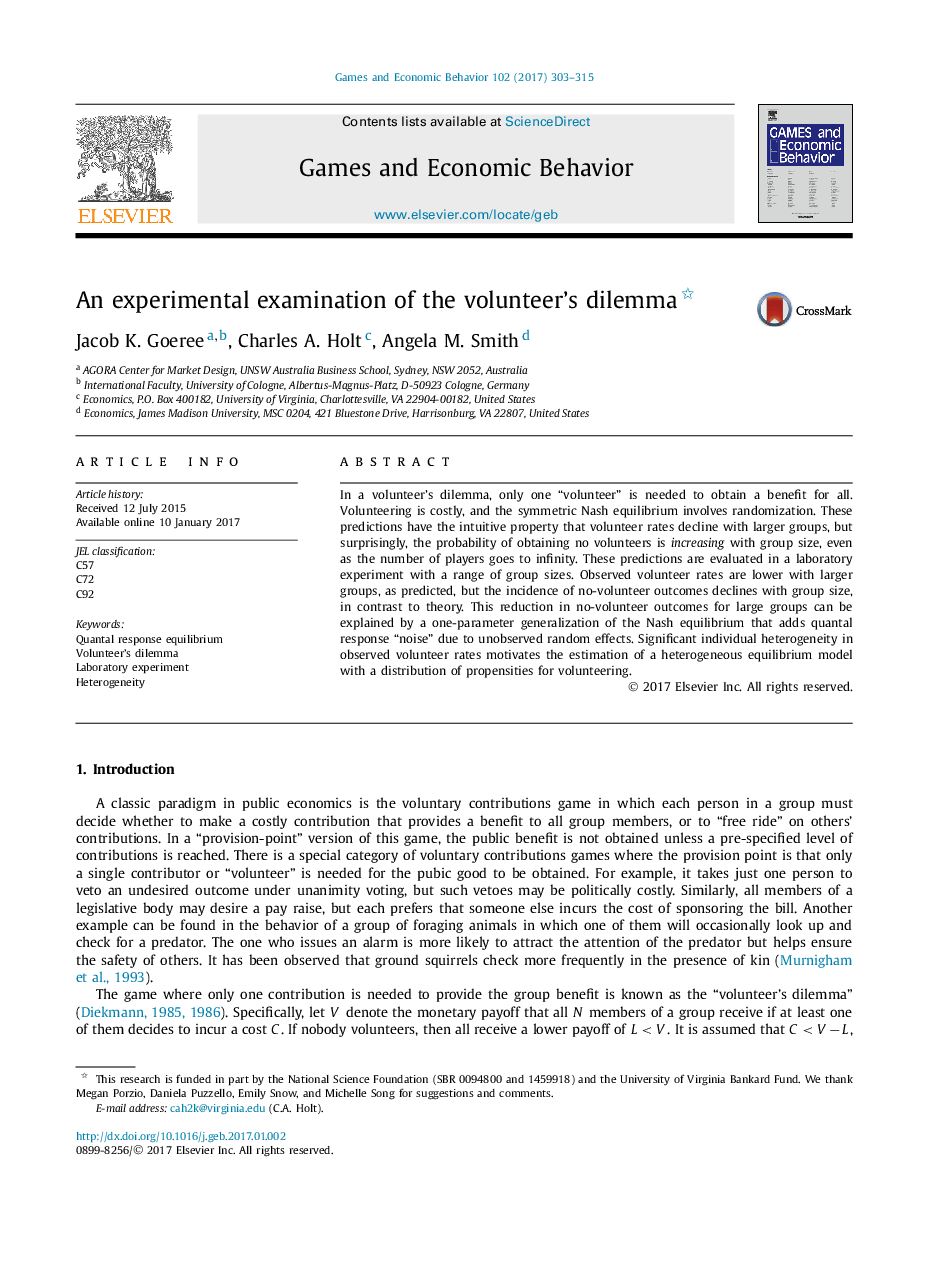| Article ID | Journal | Published Year | Pages | File Type |
|---|---|---|---|---|
| 5071293 | Games and Economic Behavior | 2017 | 13 Pages |
Abstract
In a volunteer's dilemma, only one “volunteer” is needed to obtain a benefit for all. Volunteering is costly, and the symmetric Nash equilibrium involves randomization. These predictions have the intuitive property that volunteer rates decline with larger groups, but surprisingly, the probability of obtaining no volunteers is increasing with group size, even as the number of players goes to infinity. These predictions are evaluated in a laboratory experiment with a range of group sizes. Observed volunteer rates are lower with larger groups, as predicted, but the incidence of no-volunteer outcomes declines with group size, in contrast to theory. This reduction in no-volunteer outcomes for large groups can be explained by a one-parameter generalization of the Nash equilibrium that adds quantal response “noise” due to unobserved random effects. Significant individual heterogeneity in observed volunteer rates motivates the estimation of a heterogeneous equilibrium model with a distribution of propensities for volunteering.
Related Topics
Social Sciences and Humanities
Economics, Econometrics and Finance
Economics and Econometrics
Authors
Jacob K. Goeree, Charles A. Holt, Angela M. Smith,
